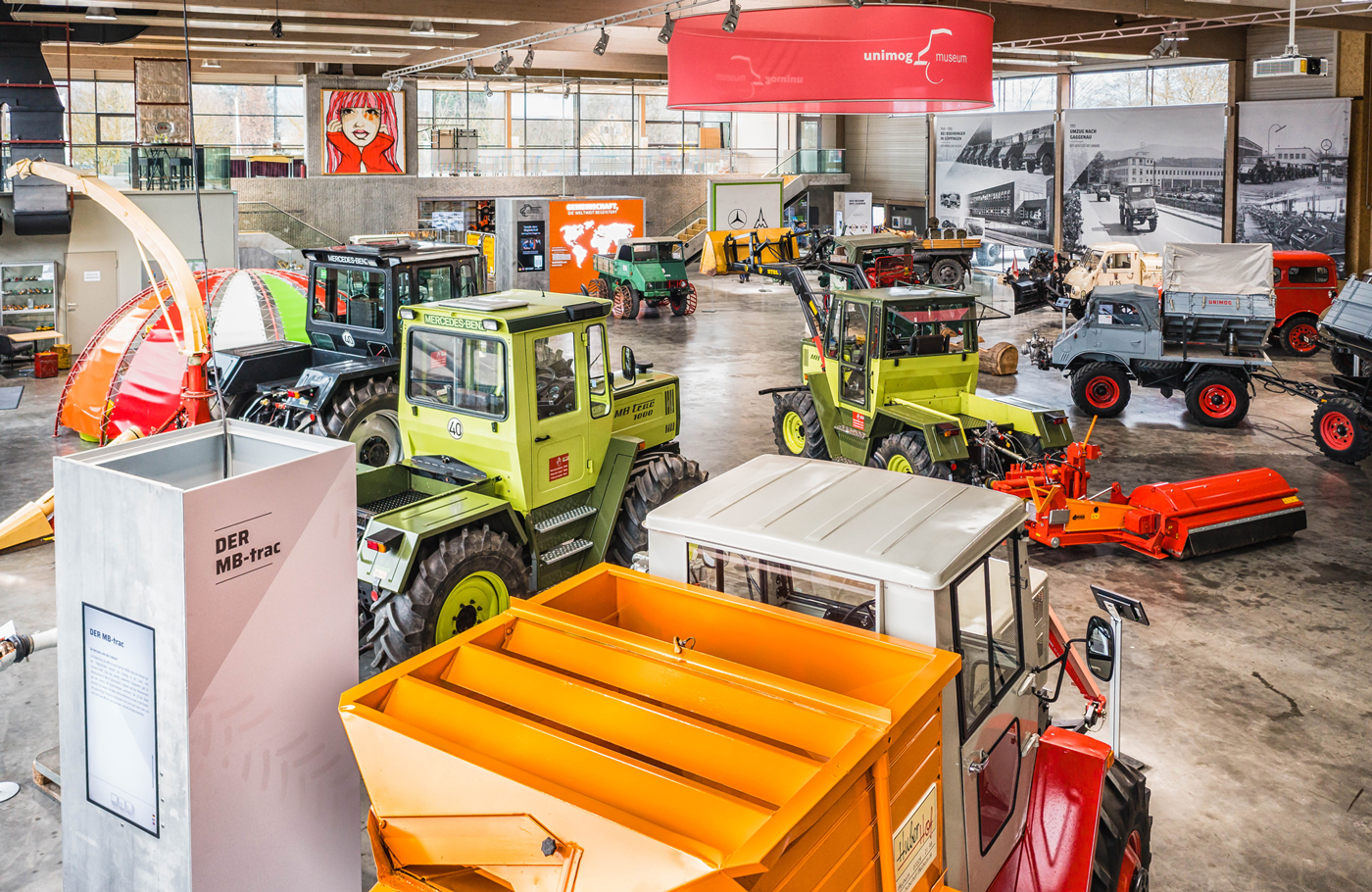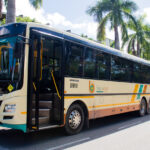From rolling libraries to a must-see museum
From rolling libraries to a must-see museum
Medium commercial vehicles (MCVs) have long been praised for the customisation that they offer and the diverse range of applications for which they can be used. JACO DE KLERK takes a look at two quirky conversions and pays homage to a legend.
First up is a heart-warming tale of community connection: a mobile library that provides reading material to people around Iwaki, a small town near the Pacific coast in Japan’s Fukushima prefecture.
Imagination on four wheels
Every child in the area surrounding Iwaki is familiar with Iwaki-Go. This distinctive mobile library from Fuso, the Japanese subsidiary of Daimler Truck and one of Asia’s leading commercial vehicle manufacturers, is based on the Fuso Canter.
With the help of this iconic vehicle, a dedicated team manages to provide all age groups with interesting reading material, while at the same time offering a unique place for people to meet and exchange.
Each month, the micro-library on wheels visits several dozen communities, schools, and educational institutions scattered throughout the mountainous region.
Functional, customised design
The library’s sidewalls can be opened, inviting visitors to browse the shelves. Inside and out, the space is optimised for storage, providing room for around 3 000 books aimed at a wide variety of target groups. On the outside, the vehicle is adorned with a distinctive design that appeals to young and old alike: cute figures in a hilly landscape reminiscent of Iwaki-Go’s home. The vehicle is equipped with a loudspeaker and plays music to announce its arrival in small towns.
A passion for region and community
In March 2011, a tsunami triggered by a strong earthquake hit the coastal region of Fukushima, causing extensive damage to the Fukushima nuclear power plant. Iwaki, which is located 40 km south of Fukushima, was not spared from damage. Although the town was far enough inland to avoid being directly hit by the tsunami, the violent tremors caused widespread damage to Iwaki General Library’s stock and buildings. Just two months after the disaster in May 2011, the mobile library resumed operations, giving the population back an important part of their community life.
A fit-for-purpose workplace on wheels in the heart of nature
Iwaki-Go isn’t the only converted Canter to be featured by Fuso, as its designers developed a prototype of a future-oriented workplace on wheels that enables flexible mobile working in proximity to nature. Dubbed the Fuso NOMADPro, it combines a creative contemporary vehicle concept with traditional Japanese design elements.
Taking positives from the pandemic
The change in workplace culture that has been accelerated by the Covid-19 pandemic is driving a redesign and flexibilisation of work worldwide. Remote working and flexible working hours are becoming part of everyday life for an increasing number of people. Along with the many benefits this change brings to individuals, however, mixing work hours with one’s personal life is also showing negative effects on both physical and mental health.
As a result, many people are starting to explore new ways to balance work, leisure, and personal well-being. The NOMADPro was developed to support people on this journey. It has been proven that spending time in nature has a positive effect on mental health, while regular outdoor exercise also promotes physical fitness. The Fuso NOMADPro enables people to work in direct contact with nature, opening up numerous new possibilities for contemporary, individual working models.
Catering for customisation
The wing body design of the NOMADPro demonstrates the versatility of the Canter chassis and the wide range of applications for this MCV, while it simultaneously creates new avenues for customisation and use.
The main feature is the retractable right wing, which enables a complete outdoor working experience. The interior is dominated by natural materials and Japanese design elements, such as bamboo wood floors with tile inlays, natural wood surfaces, and tatami-style seats.
The vehicle is equipped with a stowable table and benches that provide a comfortable workspace for up to two people. Furthermore, the Fuso NOMADPro is equipped with a pull-out bed, a studio kitchen, a sink, and a shower area.



Tribute to a time-tested legend
The Canter isn’t the only vehicle from the stall of the three-pointed star that caters for customisation. Depending on the date of manufacture and the model, the Unimog series encompasses the light, medium, and heavy commercial vehicle segments, and you can’t write about customisation without giving this beast an honourable mention.
They have been converted into campers, fire trucks, and anything in between, as the Unimog has been designed to transport payloads ranging from 4 000 to 7 500 kg in the most severe terrain and climate conditions.
It is no wonder that this commercial vehicle has its own museum.
Unimog museum reopens after expansion
The Unimog Museum, in Gaggenau, Germany, recently celebrated its reopening with an extensive supporting programme for all ages. This expansion doubles the available exhibition space, meaning there is now more than enough room for the new exhibition entitled: “The Best of the Unimog Museum”, including numerous spectacular vehicles and much more to amaze all visitors.
Modern expansion offers new opportunities
After two years of construction, the museum has finally completed its grand exhibition hall, standing 10 m high. Featuring abundant timber and glass, this new building increases the exhibition area by 1 100 m2 and provides an additional gallery space.
Since the reopening, the museum can now showcase almost every model from the Unimog and MB-trac tractor model series being used in a wide range of applications. In some cabs, visitors can even take to the wheel and get a feel for what it’s like to operate the “Universal-Motor-Gerät” (Unimog).
Outside, visitors also have the opportunity to take a fast-paced ride on an all-terrain course with slopes and inclines of over 90%. This innovative exhibition concept also includes new digital exhibits and a scavenger hunt using your smartphone. To top off the Unimog exhibit, the new building is also home to a permanent exhibit on automotive manufacturing in Gaggenau from 1894 to the present day.
In his opening speech, Christof Florus, Mayor of the City of Gaggenau, said: “The Unimog Museum is a jewel for the entire Murg Valley and beyond – and today it shines twice as brightly into the wider world. Getting something like this off the ground, privately, voluntarily, with an association: great work!”
This extraordinary automotive museum is absolutely worth a visit, and I look forward to seeing more MCVs being customised for the greater good.
Published by
Jaco de Klerk
focusmagsa




